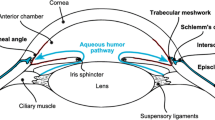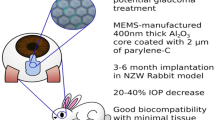Abstract
The behavior of solid percutaneous connectors made of gold, stainless steel, vitreous carbon and titanium was studied in humans. Evaluation parameters were biocompatibility studied by conventional histochemical methods, surface degradation studied by scanning electron microscopy, and electrical impedance.
The results showed after two months very slight inflammatory reaction for carbon and titanium and moderate epidermal downgrowth. In stainless steel, histology showed a somewhat more pronounced reaction, whereas in gold, there was a macroscopic inflammatory reaction. No signs of surface degradation was found in any of the materials. The electrical impedance was constant throughout the experiment.
It is concluded that of the materials investigated, vitreous carbon and titanium are preferable in percutaneous connector applications. The higher impedance seen in vitreous carbon favors the use of titanium in electrical stimulation. Careful surgery with minimal trauma, controlled surface characteristics and a pure inert material are termed factors of importance to make percutaneous connector applications successful.
Similar content being viewed by others
References
Basmajian, J. V., andStecko, G. A. A new bipolar indwelling electrode for electromyography.J. Appl. Physiol. 1962,17, 849.
Basmajian, J. V.. Multiple myo-electric control sites: training of individual moto-neurons. In P. Herberts, R. Kadefors, R. Magnusson, and I. Petersén, (Eds.).The control of upper-extremity prostheses and orthoses. Springfield: Thomas, 1974.
Benson, J. Carbon offers advantages as implant material in human body. Nasa Tech. Brief 69-10087, April 1969.
Bokros, J. C., LaGrange, L. D., andSchoen, F. J. Control of structure of carbon for use in bioengineering. InChemistry and physics of carbon, Vol. 9, pp. 103–171. New York: Marcel Dekker, 1973.
Brånemark, P. I., Breine, U., andAspegren, K. Microcirculatory studies in man by high resolution vital microscopy.Angiology 1964,15, 329–332.
Brånemark, P. I. Intra-osseus anchorage of dental prostheses.Scand. J. Plast. Reconstr. Surg. 1969,31, 81–100.
Brånemark, P. I. Intravascular anatomy of blood cells in man. Basel: Karger, 1971.
Caldwell, C. A high strength platinum percutaneous electrode for chronic use. Ph.D. Thesis, Report No. EDC 4-70-30, Case Western Reserve University, Cleveland, 1970.
Cowlard, F. C., andLewis, J. C. Vitreous carbon — a new form of carbon.J. Mater. Sci. 1967,2, 507–512.
Davis, S. D., Gibbons, D. F., Martin, R. L., Levitt, S. R., Smith, J., andHarrington, R. V. Biocompatibility of ceramic implants in soft tissue.J. Biomed. Mater. Res. 1972,6, 425–449.
Dawson, W. W. Electrode materials study. Contract No. NIH-71-2286, Center for Research on Human Prosthesis, Univ. of Florida, Gainesville, Florida, 1974.
Gibbons, D. F., Peckham, P. H., andMartin, R. L. Vitreous carbon percutaneous electrodes for muscle stimulation.J. Biomed. Mater. Res. Symp. 1972,3, 155–164.
Hall, C. Wm., Liotta, D., O'Neal, R. M., Adams, J. G., and De Bakey, M. E. Medical application of the velour fabrics. In S. N. Levine (Ed.).Materials in biomedical engineering, Ann. New York Acad. Sci. 1968,146, 314–324.
Hartmann, D., andMooney, V.. Biocarbon project. In J. B. Reswick and V. L. Nickel (Eds.).Quarterly reports of progress, period ending July 1, 1973, Rancho Los Amigos Hospital, Downey, Cal. 1973.
Kadefors, R., Reswick, J. B., andMartin, R. L. A percutaneous electrode for long-term monitoring of bio-electrical signals in humans.Med. Biol. Eng. 1970,8, 129–135.
Lundskog, J. Heat and bone tissue.Scand. J. Plastic Reconstr. Surg. Suppl. 1972, No. 9.
Mortimer, J. T. (Ed.). Final report, development of orthotic systems for the quadriplegic patient. EDC report No. 4-73-33, 1973.
Peckham, H. Electrical excitation of skeletal muscle: alterations in force, fatigue and metabolic properties. Ph. D. Thesis, Report No. EDC 4-72-32, Case Western Reserve Univ., Cleveland, 1972.
Reswick, J. B. (Ed.). Final report, biomedical research program on cybernetic systems for the disabled. EDC 4-70-29, Case Western Reserve Univ., Cleveland, 1970, pp. 351–359.
Scott, R. N. A method of inserting wire electrodes for electromyography.IEEE Trans. Bio-Med. Engng. 1965,12, 46–47.
Stanitski, C. L., andMooney, V. Osseus attachment to vitreous carbons.J. Biomed. Mater. Res. Symposium No. 4; F. H. Hulbert et al. (Eds.)Materials and design considerations for the attachment of prostheses to the musculo-sceletal system. New York: Wiley, 1973.
Author information
Authors and Affiliations
Additional information
This project was supported by The Swedish Board for Technical Development and The Neubergh Foundation.
Rights and permissions
About this article
Cite this article
Kadefors, R., Herberts, P. & Almström, C. A comparison of materials for percutaneous connectors. Ann Biomed Eng 2, 274–288 (1974). https://doi.org/10.1007/BF02368498
Received:
Issue Date:
DOI: https://doi.org/10.1007/BF02368498




